Meaning of Teacher Education - 2 Chapter Notes | Crash Course for UGC NET Education PDF Download
| Table of contents |

|
| Structure and Vision of Teacher Education Curriculum |

|
| Components of Pre-Service Teacher Education |

|
| Transactional Approach |

|
| Collaborative Learning |

|
| Experiential Learning |

|
Structure and Vision of Teacher Education Curriculum
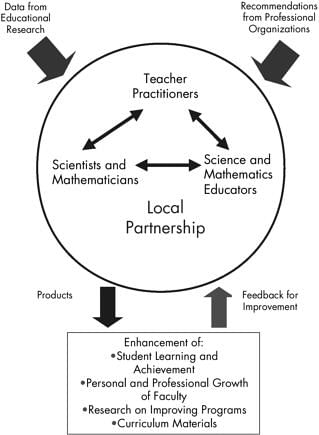
The structure of teacher education forms the basis for all teacher education programs. How these programs are designed, implemented, and assessed is influenced by this structural framework. The National Council of Educational Research and Training (NCERT) emphasizes that the structure and vision of the teacher education curriculum should encompass:
- Issues related to children's learning
- Understanding the nature of knowledge
- Recognizing the school as an institution
NCERT aims to improve both school education and teacher education in India. The National Council for Teacher Education (NCTE), established by an Act of Parliament in 1993, works to make teacher education more responsive to developmental changes and challenges. NCTE focuses on addressing deficiencies in teacher education and adapting to new demands.
Recently, NCERT has sought to update teacher education curricula to align with contemporary needs, following recommendations from a review committee (Govinda committee) that highlighted the interdisciplinary nature of education. The committee suggested:
- Identifying fundamental concepts that connect teaching and learning processes.
- Emphasizing the unique nature of education as a field of study with its evolving knowledge base and epistemology.
Teacher education curricula should encourage teachers to reflect on their practices and become agents of change. Despite efforts to develop stage-specific curricula for school education, there remains a significant gap between curriculum and practice.
Vision for Teacher Education
The National Council for Teacher Education (NCTE) envisions a teacher education system that is more responsive to the evolving needs of the school system. This involves preparing teachers to be supportive, empathetic, and effective facilitators in the teaching-learning process, helping students to discover and develop their talents and potential to the fullest.
Teacher education should combine theoretical knowledge with practical field experiences, fostering an understanding of knowledge as something that is actively constructed by learners during the learning process, rather than being external to them. It is essential to integrate academic knowledge and professional learning into a cohesive and meaningful whole.
Furthermore, teacher education programs should encourage critical examination of the curriculum, syllabi, and textbooks, rather than accepting them unquestioningly. Teachers need to be equipped with the skills to organize learner-centred, activity-based, and participatory learning experiences, which include play projects, discussions, observations, field visits, and the integration of academic learning with productive work.
There is also a need to broaden the curriculum of both schools and teacher education programs to include diverse traditions of knowledge, and to educate teachers on connecting school knowledge with community knowledge and real-life experiences outside of school.
Teacher Education at the Elementary Stage
The vision for teacher education at the elementary stage encompasses several key aspects:
- Language and Subject Knowledge: Teachers should have a strong grasp of the first and second languages, mathematics, and topics related to social and natural sciences.
- Organizing Learning Experiences: Teachers must be capable of identifying, selecting, and organizing learning experiences related to the subjects mentioned above.
- Child Health and Development: Teachers need both theoretical and practical knowledge of child health, physical and recreational activities, games, creative arts, and music.
- Psychological Principles: Understanding major psychological principles related to the growth and development of children is essential for teachers.
- Childhood Education: Teachers should have theoretical and practical knowledge regarding childhood education.
- Principles of Learning: Knowledge of the principles of learning in formal and informal situations is crucial for teachers.
- Role of School and Community: Teachers must understand the role of schools, peer groups, and the community in shaping a child's personality and development.
- Societal Change: Awareness of the role of school teachers in bringing about societal change is important.
- Nature and Purpose of Elementary Education: Teachers should be aware of the nature, purpose, and challenges of elementary education.
- Understanding Children: It is vital for teachers to understand the nature and maturity of children to ensure effective education and holistic development.
- Holistic Problem-Solving: Teachers should develop a holistic approach to understand and address the various problems of life.
Teacher Education at Secondary Stage
Teacher education at the secondary stage involves teaching specialized subjects. After completing their teacher education, teachers should possess the following traits:
- In-depth understanding of specific disciplines.
- Knowledge of how adolescents learn.
- Understanding of work and experience.
- Teaching skills.
- Ability to develop understanding, skills, interests, and attitudes for the overall growth of the child.
- Understanding of personality and personality development.
- Communication, mental, and social skills for interacting with pupils.
- Knowledge of the structure and functioning of various body systems.
- Understanding the role of physical education, games, and recreational activities in improving adolescent health.
- Interest in child development.
- Skills in guiding and counseling learners in academic and vocational subjects, as well as in academic and personal issues.
Teacher Education at the Higher Secondary Level
The vision for teachers who have completed their education for the higher secondary stage includes:
- Developing a perspective for specific streams among teachers.
- Guiding learners and preparing them for self-study, independent learning, critical thinking, and self-evaluation.
- Making students aware of the philosophy, purpose, and teaching-learning strategies of the subject they will teach.
- Communicating abstract and complex ideas in simple terms.
- Fostering patriotism and national consciousness among learners.
- Sensitizing students about HIV/AIDS and promoting a positive attitude towards healthy living.
Components of Pre-Service Teacher Education
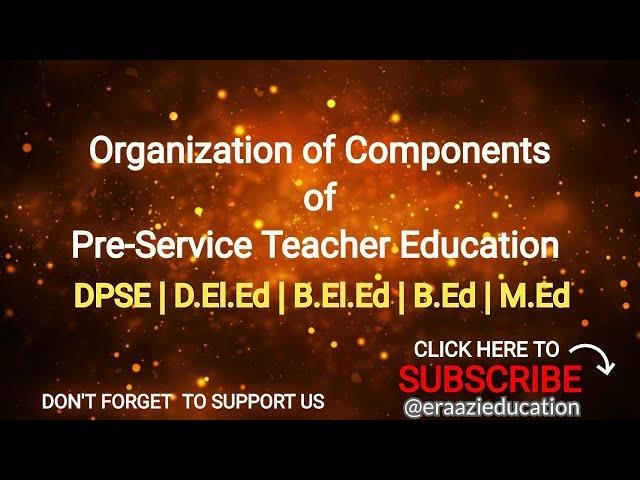
Pre-service teacher education refers to the training and education that teachers receive before they officially enter the teaching profession. In India, the qualifications and requirements for pre-service teacher education vary from state to state and also depend on whether the teacher plans to work in a primary or secondary school. Despite these variations, pre-service programs generally share some common components:
- Subject-Content Knowledge: This involves a deep understanding of the subjects that teachers will be teaching.
- Pedagogic Content Knowledge: This includes knowledge about teaching methodologies and how to assess student learning effectively.
- Understanding Child Development: Teachers need to understand how children learn, both cognitively and socially, as this impacts their teaching methods.
- Teaching Practice: Pre-service programs typically include opportunities for aspiring teachers to practice teaching under the supervision of experienced educators.
Many teachers value their pre-service training highly because it helps build their confidence, increases their awareness of the responsibilities involved in being a teacher, and provides them with a new framework for entering the profession successfully.
Organisation of Components of Pre-Service Teacher Education
1. Determining Objectives: The teacher identifies the teaching objectives based on the psychology of the students and the needs of the school and society. Understanding how children learn according to their cognitive and social development is crucial at this stage.
2. Subject Content Knowledge: A strong grasp of subject knowledge is essential for high-quality teaching. Teachers need to understand the subjects they are teaching, including the structure and sequencing of concepts, and develop the necessary factual knowledge for each subject. This knowledge guides them in teaching students effectively.
3. Pedagogic Content Knowledge: Teachers use their subject knowledge to make decisions about pedagogical strategies, assessment, and curriculum implementation. Sound subject content knowledge positively impacts these decisions and contributes to curriculum development.
4. Teaching Practice: This component provides aspiring teachers with the opportunity to gain practical experience working with students in real classrooms. It is essential for acquiring professional competence and meeting the requirements of a degree in education.
Transactional Approach
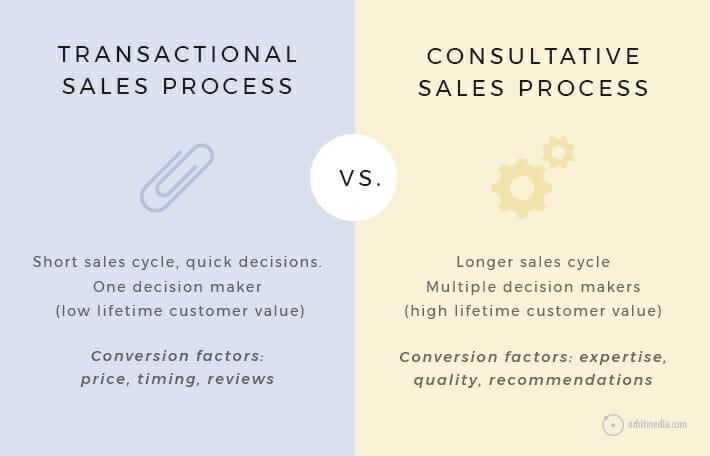
In this approach, a situation is created where students can engage with the material to be learned in order to construct knowledge. This policy is related to constructivism, which emphasizes that knowledge is not simply transmitted but built by students as they connect their experiences with new information.
Since each student's past experience is different, their interpretation of new knowledge will also vary. Teachers play a supportive role in helping learners construct knowledge rather than just delivering it.
For foundation courses, there are three types of transactional approaches:
- Expository Method: This involves presenting information in a clear and structured manner.
- Collaborative Learning: This approach encourages students to work together to construct knowledge through discussions and group activities.
- Experiential Learning: This method focuses on learning through direct experience and reflection on that experience.
Expository Method
The expository method involves the detailed explanation or interpretation of a specific topic or subject matter. In this approach, the teacher takes the lead in the discussion and guides the lesson, often asking questions to engage students. This method is more popular because it is generally more efficient and time-saving compared to discovery learning.
Applications of Expository Method
When Important Information is Required: Use this method when crucial information is necessary for the class to understand the topic.
When Learners Lack Previous Knowledge: If students lack prior knowledge, the teacher can save time by providing the necessary background information.
When Explanation is Essential: Use this method when an idea or principle can only be understood through detailed explanation.
When Induction is Time-Consuming: If induction would take too much time and its difficulty outweighs its value, the expository method is more appropriate.
Steps of Conducting Expository Teaching
Expository teaching involves several steps, including:
1. Introduction and Overview: Expository teaching starts with an introduction and an overview of the topic before diving into specific details.
2. Focusing on Key Points: The teacher directs the students' attention to the key points of the subject, using graphics, diagrams, or other representations to elaborate on the topic.
3. Moving from General to Specific: The instruction progresses from general information to specific details, helping students understand the material and connect it to the previously presented overview.
4. Teacher Instructional Strategy: The teacher's instructional strategy is designed to help students acquire factual material, facilitated by pre-instructional verbal statements and the sequencing of content.
Tools for Exposition
To enhance clarity in exposition, the following tools can be utilized:
- Analogies and Stories: Using relatable comparisons and narratives to explain concepts.
- Illustrations: Visual representations to aid understanding.
- Models: Physical or conceptual representations of ideas.
- Demonstrations: Practical displays to show how something works.
- Outlines and Summaries: Brief overviews to highlight key points.
- Diagrams: Detailed drawings to explain complex information.
Collaborative Learning
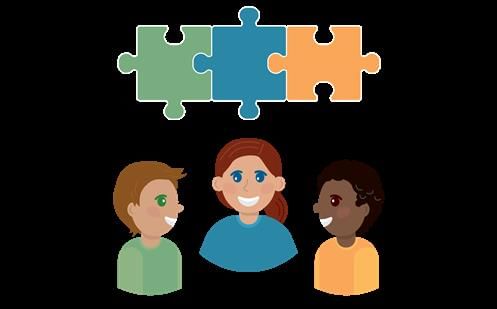
Collaborative learning, as the name implies, is an educational approach where a small group of learners works together to tackle a specific problem. In this method, learners collaborate in pairs or small groups to gather relevant materials and knowledge.
Furthermore, active learning encompasses collaborative learning and involves individual participation in the learning process through activities such as discussion, listening, writing, and reading. The concept of collaborative learning originated from the idea of a 'virtual classroom,' where individuals engage in collective learning experiences.
Objectives of Collaborative Learning
- Problem Solving: Learners can help each other in solving problems.
- Knowledge Sharing: Members can share their knowledge and resources.
- Team Skills: It helps in building team skills and leads to a deeper understanding of the subject.
- Resource Sharing: A collaborative learning environment allows members to solve complex problems together and share expensive resources.
- Increased Productivity: It boosts productivity towards a common goal by improving learning skills and generating knowledge as a group.
Approaches for Collaborative Learning
- Integrating Information: Combine and relate information to generate new knowledge.
- Identifying Peer Needs: Understand the needs of peers and provide the necessary information.
- Healthy Discussion: Encourage healthy discussions among team members from different backgrounds.
Benefits of Collaborative Learning
- Encourages the development of critical thinking abilities.
- Involves the creation and sharing of knowledge.
- Facilitates the exchange, discussion, and negotiation of ideas.
- Engages learners in an active thinking process.
- Leads to increased achievements and higher productivity.
- Fosters the development of social interaction skills.
- Enhances communication and discussion abilities.
- Cultivates multi-dimensional problem-solving skills.
- Provides on-demand interaction and support.
Experiential Learning
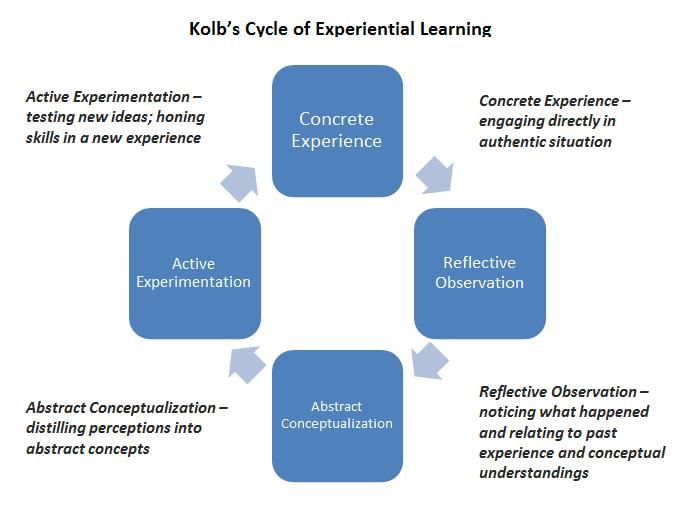
Experiential learning refers to the process of learning through experience. This concept was initially explored by educational theorists such as John Dewey and Jean Piaget. However, it gained widespread recognition through the work of David A. Kolb and Ron Fry, who developed the Experiential Learning Theory. This theory posits that learning is a process of creating knowledge by transforming experience.
Kolb's Experiential Learning Theory comprises a four-stage learning cycle and four distinct learning styles. The stages include:
- Concrete Experience: Engaging in a specific experience.
- Reflective Observation: Reflecting on the experience.
- Abstract Conceptualization: Drawing conclusions and forming concepts based on the experience.
- Active Experimentation: Applying what has been learned to new situations.
Kolb's learning styles—diverging, assimilating, converging, and accommodating—reflect different approaches individuals take in the learning process. Overall, Kolb's theory emphasizes a holistic view of learning, integrating experience, perception, cognition, and behavior.
Experiential Learning Cycle
1. Concrete Experience
- This is the phase where learners draw upon their own personal experiences. It involves recalling specific events or situations from their lives that are relevant to the learning process.
- For example, a student might think about a time when they successfully worked in a team to complete a project.
2. Reflective Observation
- In this step, learners reflect on the concrete experiences they have identified.
- They consider what happened during those experiences, how they felt, and what they learned from them.
- Continuing with the previous example, the student would reflect on their feelings and thoughts about the team project they recalled.
3. Abstract Conceptualization
- After reflecting on their experiences, learners move to this phase where they begin to formulate ideas and concepts based on their reflections.
- They consider what they could do differently in similar situations in the future.
- For instance, the student might think about how they could improve their teamwork skills in future projects.
4. Active Experimentation
- This is the final phase where learners put their ideas and concepts into practice.
- They actively experiment with new approaches or strategies in real-life situations.
- In our example, the student might seek out opportunities to work in teams on new projects to apply what they have learned about teamwork.
Why Experiential Learning is Important
Makes Learning Relevant: Participants build on their existing knowledge and make connections between new and old concepts.
Enhances Learning Effectiveness: Participants engage in critical thinking, problem-solving, and decision-making.
Connects Theory to Practice: Participants have the opportunity to practice what they've learned and see how theoretical concepts apply in real situations.
Aids Memory Retention: Strong connections between emotions and thinking processes help participants remember information better when it's linked to values and feelings.
Fosters Lifelong Learning Skills: Assists in acquiring essential skills and encourages participants to reflect, conceptualize, and plan their next steps.
Methods of Experiential Learning
- Field Trips: These involve short observational activities conducted outside the classroom. Field trips provide students with genuine opportunities for hands-on experience and learning in real-world settings.
- Narratives: Narratives engage readers by incorporating specific and sensory details that draw them into the story. This method aims to involve the reader emotionally and intellectually in the narrative being presented.
- Experiments: Experiments involve testing a hypothesis through trial and error to determine its validity. This method helps learners understand the relationship between cause and effect by providing practical evidence.
- Simulation: In simulations, teachers create and control an artificial environment to achieve specific educational objectives. This method allows students to explore concepts and scenarios in a controlled setting.
- Games: Games offer children the opportunity to express and work through their feelings while playing. They also contribute to the development of social skills as children interact and engage with each other during gameplay.
- Story-Telling: Storytelling involves conveying events and experiences through words, capturing moments to preserve them in memory. This method aims to engage listeners and create a connection with the narrative being shared.
- Focused Imaging: Focused imaging exercises are designed to relax students and allow them to experience a situation firsthand. These exercises nurture and develop students' creative potential by encouraging them to visualize and immerse themselves in different scenarios.
- Role Playing: Role playing involves students acting as characters in predefined situations. This method helps students understand the concerns, values, and perspectives of others, fostering empathy and social awareness.
- Model Building: Model building entails creating models from kits or components, either purchased or sourced from a builder. This hands-on activity encourages creativity and practical skills in constructing physical representations of concepts.
- Surveys: Surveys involve gathering information and interpreting it to draw conclusions. This method helps students develop skills in research, data collection, and analysis.
|
85 videos|67 docs
|
FAQs on Meaning of Teacher Education - 2 Chapter Notes - Crash Course for UGC NET Education
| 1. What is the significance of a well-structured Teacher Education curriculum? |  |
| 2. What are the key components of Pre-Service Teacher Education? |  |
| 3. How does a transactional approach benefit teacher education? |  |
| 4. What is the role of collaborative learning in teacher education? |  |
| 5. Why is experiential learning important in teacher education? |  |




















